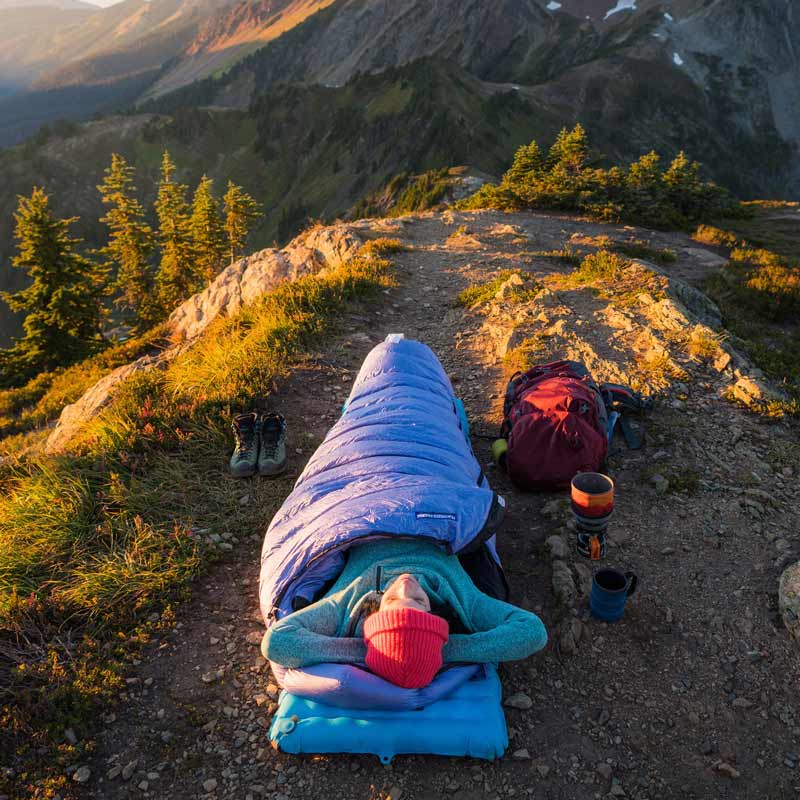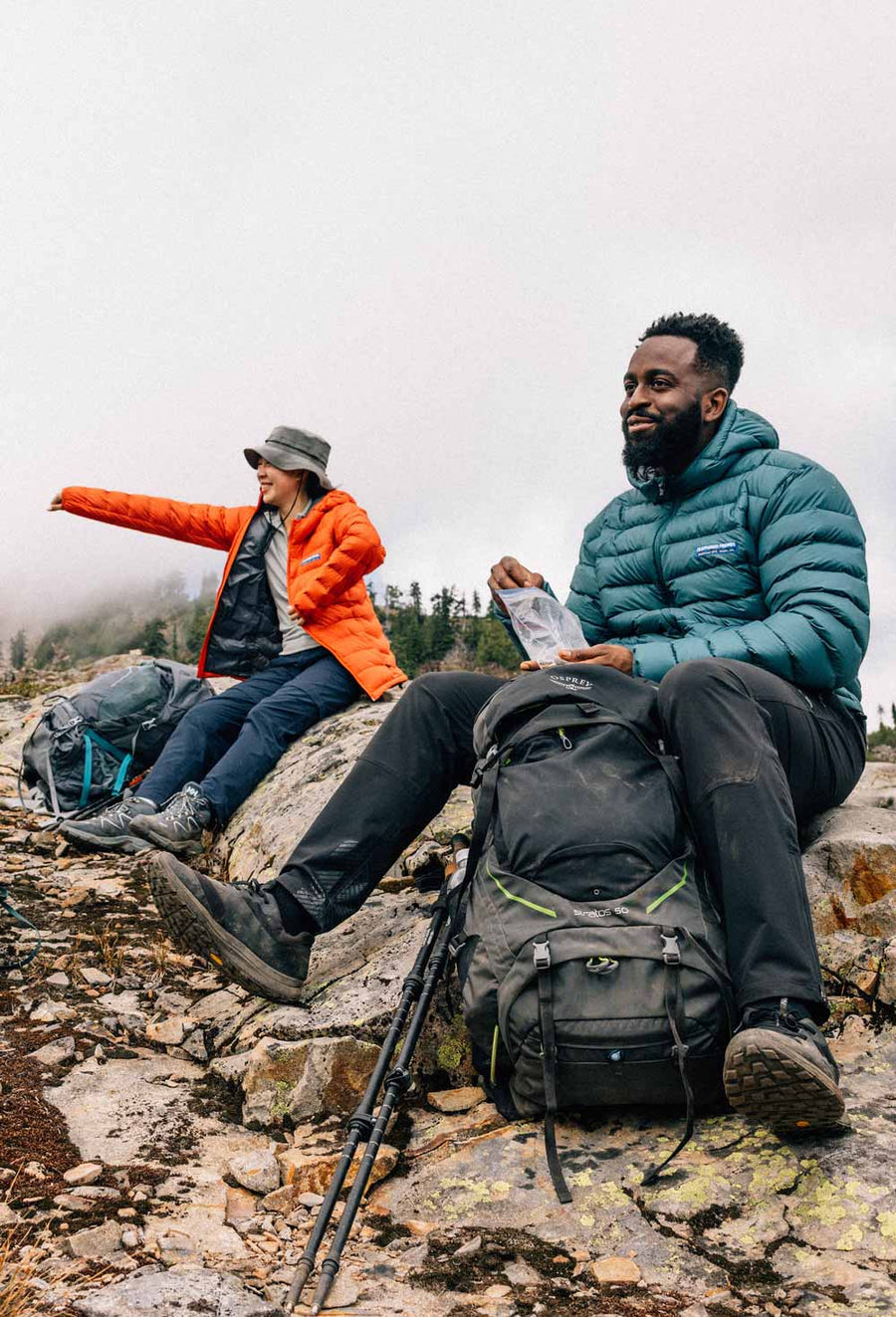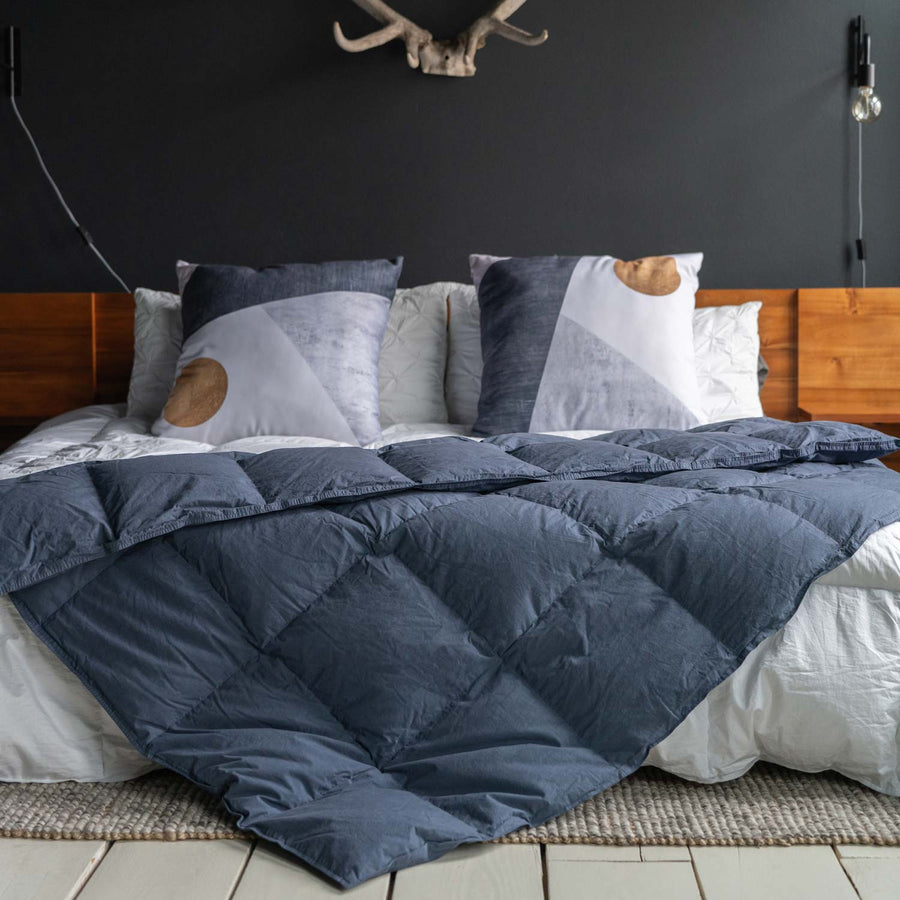Backpacking Hacks Part 2
Part two is a smorgasbord of advice from the Feathered Friends staff on simple ways to maximize the fun while on a backpacking (or camping) adventure.

1. Bring “Sacred Socks”
Our feet take a beating on hikes (especially backpacking trips) when we wear the same pairs of socks for hours or days on end. While some feet (and noses) don’t mind, others do not take kindly to the abuse and complain. Our solution; bring a pair of clean “sacred socks” that are only worn in the tent. Not only does this keep your bag clean and fresh, but it also gives you the opportunity to rinse the salt and dirt from your hiking pair to prevent salt rash and unhappy feet.
2. Don’t skimp on your sleeping pad
Campsite comfort matters. After a long day of hiking there is nothing better than sitting down for a good meal and then crawling into a cozy tent and sleeping bag. Sadly, too often people forget about their sleeping pad and end up tossing and turning all night trying to find a comfortable position.
For some people the simple foam layer will work well, but we are big fans of inflatable sleeping pads like those made by Therm-a-Rest, Exped, and Sea-to-Summit. While a little more expensive to get a high quality one, when taken good care of these pads can last a long time. They are also not only more comfortable, but also quite a bit warmer in cold conditions.
3. Trekking poles
Meet your new best hiking friend. Trekking poles are an incredibly useful piece of gear that have a multitude of uses. First, they have a huge impact on the happiness of our knees and leg joints, especially on the descent. Second, they help immensely with balance, especially on rocky trails and snow. Third, they are a useful tool around camp, ideal for anchoring a tarp or defending your chocolate bar dessert from hungry fellow hikers.
4. Find the right bug spray
Mosquitos. Flies. Ticks. Oh my! There are many biting bugs that coexist in our favorite outdoor places, so it is important to find a bug spray that matches our needs. In some places, the mosquitoes are so bad that you have to use DEET, a strong chemical that is not great for humans or our plastic based gear. With prolonged use, DEET can discolor and eventually degrade a wide variety of gear, especially those that contain rayon, spandex, and vinyl. With this in mind, my personal favorite bug spray uses the chemical Picaridin. A synthetic chemical based on the compounds in black pepper plants, Picaridin is gear-safe and better for your skin.

5. Make your own firestarter kit
The ability to make a fire is not only a cool skill, but also a potentially life saving activity. In emergency circumstances a fire helps rescuers find you and could provide warmth too. Starting the fire is the tricky part, however, and a firestarter kit makes it infinitely easier. While you can buy premade kits, one of the easiest and affordable options is to saturate a few cotton balls with vaseline, package them up in plastic, and put them in a ziploc bag with waterproof matches and a small flint. With these three tools you stand a much better chance of starting that fire when you need it, especially in bad weather.
6. The easy way to stuff a sleeping bag
It is 6 am, you have a big day of hiking ahead of you, the horizon steadily lightens, and you are still packing up camp. To speed the camp-breakdown process, a simple tip is to stuff your sleeping bag inside out. The outer face fabric holds in heat and air well, resulting in the balloon of downy sleeping bag that refuses to go inside the sack. By stuffing inside out, the air can escape through the thinner inner lining of the bag, eliminating the frustration of the morning stuffing ritual.
7. Don’t forget a towel for the dogs
Hike with four legged companions? Then stash a few dry towels in the car! After a long day (or days) of hiking, our furry companions are often a little damp and dirty. Once you are back at the car, the fluffy dry towels make loading and cleaning up for the car easy.
8. Bandanas: they do everything.
It is amazing that a simple piece of fabric could do so much. Sweatband. Washcloth. Knee wrap. Pack decoration. Handkerchief. Necktie. Sun shield a la Lawrence of Arabia hat style. Headband. Compress…. The possibilities are endless, limited only by your imagination.
9. Always bring extra batteries for your flashlight.
Keep a set in your pack, at all times. They are so small, and easily forgotten, and always seem to run out at the least opportune time. Having a spare set is critical for your safety, especially if something unexpected happens.
The post Backpacking Hacks Part 2 appeared first on Expedition Tales.








Leave a comment